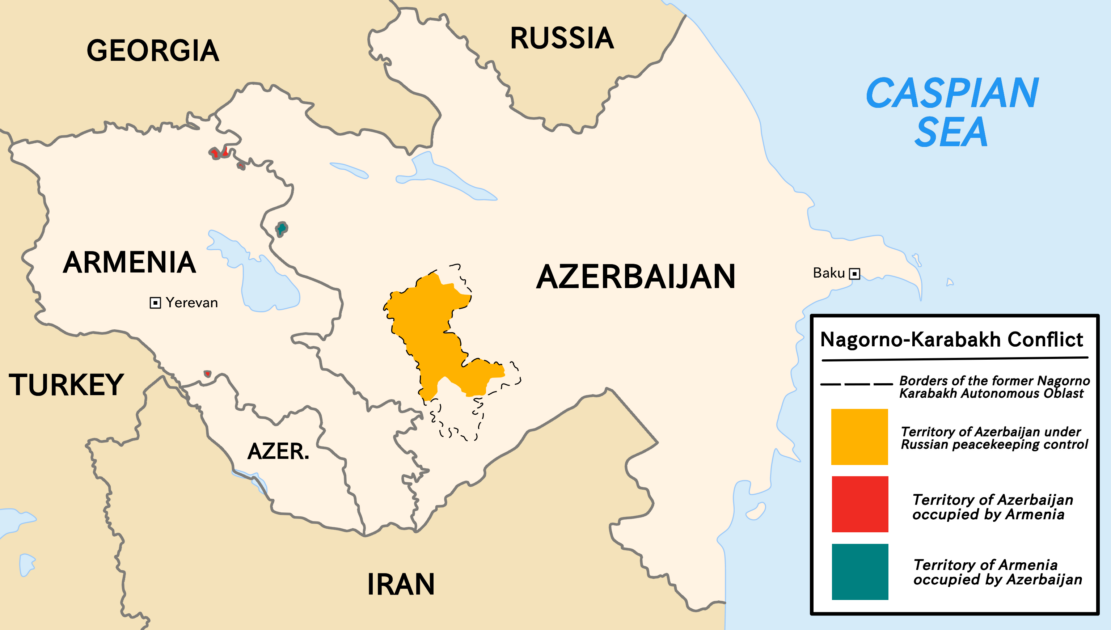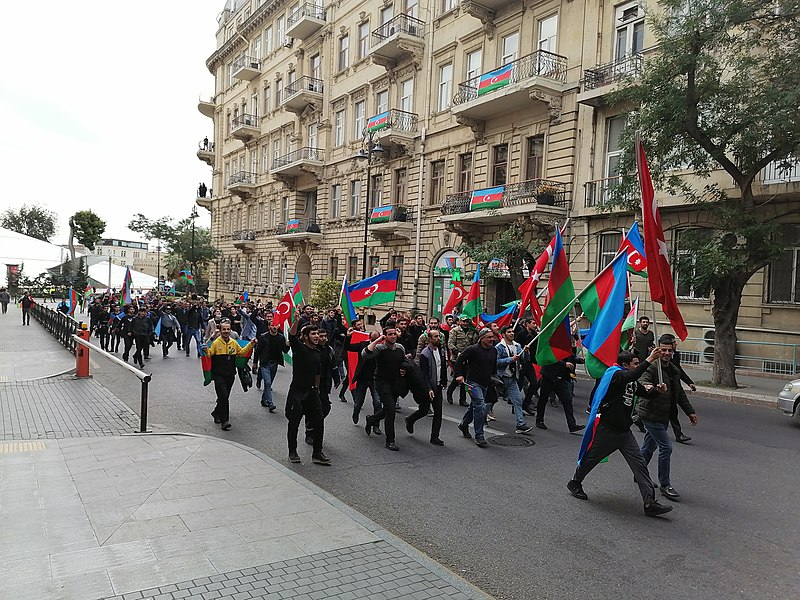Officials from the breakaway region of Nagorno-Karabakh signed a decree announcing the future dissolution of the separatist Republic of Artsakh on Sept. 28, the culmination of three decades of conflict in the disputed territory.
Internationally recognized as part of Azerbaijan, Nagorno-Karabakh is the centerpiece of a conflict between the region’s ethnic Armenian majority and the Azeri government in Baku.
Dr. Martin Claar, an assistant professor of political science at the university, says that the roots of the conflict lie in the “Soviet Union’s takeover and renegotiation of territory along the Caucasus.”

Nagorno-Karabakh was organized as an autonomous oblast of the Soviet Socialist Republic of Azerbaijan in large part due to its ethnic Armenian majority. The dissolution of the Soviet Union led to widespread ethnic tensions in the region, resulting in pogroms and expulsions.
Eventually, this resulted in the outbreak of the First Nagorno-Karabakh war between Armenia and Azerbaijan, which saw the displacement of over a million people in the process.
The war ended in 1994 with an Armenian victory and the de facto independence of Nagorno-Karabakh. Furthermore, the Armenian military occupied Azerbaijani territory outside of the enclave, forming a buffer zone that linked the region to Armenia proper.
Despite the Armenian victory in the war, the international community recognized Nagorno-Karabakh as an integral part of Azerbaijan’s territory.
“Sovereignty is not something that a territory simply claims; like you know, I am and therefore it is,” said Claar. “It is something that actually has to be afforded and recognized by the international peer group given that sovereignty is a legal claim, not just an identity claim.”
The nebulous status of the region in tandem with Armenia’s occupation of Azeri territory meant that the conflict remained largely frozen for the better part of two decades, at times only interrupted by the occasional border skirmishes.

In 2020, Azerbaijan launched a full-scale offensive into the disputed territory, igniting the Second Nagorno-Karabakh war. The renewed fighting saw Azerbaijan recovering much of the land it had lost in the first war, as well as the withdrawal of Armenian troops from Azeri territory surrounding the Nagorno-Karabakh enclave.
A peace deal brokered by Russia ended the fighting, leaving only a tiny strip of land known as the Lachin corridor as the sole connection between Armenia and Nagorno-Karabakh. The deal also mandated the deployment of Russian peacekeeping forces to patrol the corridor and uphold the terms of the agreement.
“Russia has not wanted to play an active role in engaging militarily [in the region] because they would be seen as working against their own interests in Ukraine,” said Claar, commenting on Russia’s role in the conflict. He notes that Russia has largely backed Baku’s territorial claims, in part because their governments “share a lot more than Russia does with Armenia.”
The efficacy of Russia’s peacekeeping forces came into question earlier in the year as Azerbaijan blockaded the Lachin pass, severely limiting the travel of goods into Nagorno-Karabakh. Russia’s peacekeeping forces largely maintained a hands-off approach, taking no action against the Azeri blockade.

The blockade of the Lachin pass led to severe food, fuel and water shortages in Nagorno-Karabakh, prompting a round of condemnations from other countries, including the United States.
Amidst this crisis, Azerbaijan launched what it dubbed an “anti-terrorist operation” on Sept. 19, launching airstrikes against separatist military installations in Nagorno-Karabakh and following through with a ground invasion.
Fighting ended two days later, resulting in the capitulation of the Republic of Artsakh. Russian-mediated peace talks have led to the disarmament of the breakaway republic’s military forces, and Azeri troops have begun the process of occupying parts of Nagorno-Karabakh.
Concerns have been raised regarding the treatment of ethnic Armenians by Azeri authorities.
“Most Armenians are probably going to leave that region and try to flee elsewhere,” said Claar, who predicts that they’ll likely make their way into Armenia. “That’s going to cause a run on their domestic stability and their ability to finance these refugees who are underfed, under-armed, underclothed.”
Baku has made overtures of peaceful integration, urging ethnic Armenians to stay and become citizens of Azerbaijan. However, with sixty-eight thousand refugees having left the region already, Azerbaijan’s ability to peacefully integrate the region’s ethnic Armenians remains to be seen.
The Republic of Artsakh is set to officially dissolve on Jan. 1, 2024.


